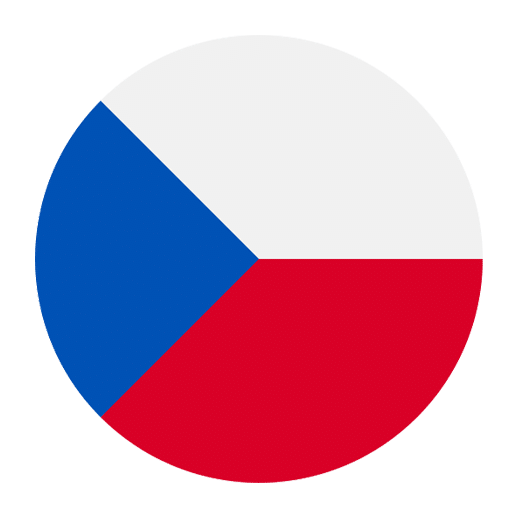Learning a new language can often feel like unraveling a puzzle, especially when you encounter words that look or sound similar but mean entirely different things. Czech, a Slavic language with its own set of complexities, offers a fascinating example with the words “kolo” and “koláč.” While these words share a striking resemblance, they could not be more different in meaning—one refers to a bicycle, and the other to a cake. In this article, we’ll delve into the specifics of these words, exploring their meanings, uses, and some interesting cultural contexts to help you better understand and remember them. By the end, you’ll not only know the difference between “kolo” and “koláč,” but you’ll also gain insights into Czech culture and language.
The Basics: Kolo vs Koláč
To start, let’s break down the meanings of these two words.
Kolo: The Bicycle
In Czech, “kolo” translates to “bicycle” in English. It can be used to refer to any type of bicycle, from a simple two-wheeler to a more sophisticated mountain bike. The word “kolo” can also extend to mean “wheel,” depending on the context. Here are a few examples:
– “Mám nové kolo.” – “I have a new bicycle.”
– “Půjčím si kolo na víkend.” – “I’ll rent a bike for the weekend.”
– “Kolo auta je prázdné.” – “The car’s wheel is flat.”
Notice how the word “kolo” can be versatile, fitting into different scenarios while maintaining its core meaning of a wheel or bicycle.
Koláč: The Cake
In contrast, “koláč” means “cake,” but more specifically, it refers to a type of traditional Czech pastry. A koláč (plural: koláče) is usually a round, sweet pastry often filled with fruit, poppy seeds, or cheese. Here’s how you might use “koláč” in a sentence:
– “Babička upeče koláče.” – “Grandma will bake cakes.”
– “Chci si dát meruňkový koláč.” – “I want to have an apricot cake.”
– “Koláče jsou tradiční české pečivo.” – “Cakes are traditional Czech pastries.”
While “koláč” is specific to a type of pastry, it plays a significant role in Czech culinary traditions, especially during holidays and family gatherings.
Pronunciation and Phonetic Differences
One of the reasons language learners might confuse these words is their similar pronunciation. Let’s look at how to pronounce them correctly.
Pronouncing Kolo
The word “kolo” is pronounced as /ˈkɔ.lo/. The “o” sounds are short, similar to the “o” in the English word “cot.” Make sure to keep the pronunciation crisp and short.
Pronouncing Koláč
On the other hand, “koláč” is pronounced as /ˈkɔ.la:tʃ/. The accent on the “á” indicates a longer vowel sound, similar to the “a” in “father.” The “č” at the end is pronounced like “ch” in “church.”
Contextual Usage and Cultural Significance
Understanding the meanings and pronunciations is one thing, but grasping the cultural context can further solidify your knowledge.
Kolo in Czech Culture
Bicycles are quite popular in the Czech Republic. The country boasts numerous bike trails and parks, making cycling a favored activity for both locals and tourists. In cities like Prague, you’ll find bike-sharing services, and in the countryside, cycling is a common weekend activity.
Thus, the word “kolo” isn’t just a term you’ll encounter in a dictionary; it’s a part of daily life in the Czech Republic. Knowing this word will not only help you in conversations but also in navigating the country if you ever visit.
Koláč in Czech Culture
Koláče hold a special place in Czech culinary traditions. These pastries are often made during festive occasions like Easter and Christmas, as well as at weddings and family gatherings. Each region in the Czech Republic has its own variation of koláče, with different fillings and toppings.
Learning about koláče gives you a glimpse into Czech culture and traditions. If you ever find yourself invited to a Czech home, don’t be surprised if you’re offered a delicious koláč with a cup of coffee or tea. Knowing this word and its significance will make you feel more at home and appreciative of Czech hospitality.
Common Pitfalls and How to Avoid Them
Even with all this information, it’s easy to mix up “kolo” and “koláč,” especially when you’re just starting out. Here are some tips to help you avoid common pitfalls.
Visual and Mnemonic Aids
Visual aids can be incredibly effective in language learning. Try associating each word with a distinct image. For “kolo,” imagine a bicycle with big, round wheels. For “koláč,” picture a round, sweet pastry.
Mnemonics can also be helpful. Think of “kolo” as having two “o”s, similar to the two wheels of a bicycle. For “koláč,” remember that the accent on the “á” makes it sound longer, just like how cakes take longer to bake.
Practice with Native Speakers
One of the best ways to solidify your understanding is to practice with native speakers. They can provide real-time feedback and correct any mistakes you might make. Join language exchange groups or use apps designed for language practice.
When you practice, try to use both words in sentences to get used to their different contexts. For example, you could say, “Dnes pojedu na kole,” (Today I will ride a bicycle) and “Upeču koláč na oslavu,” (I will bake a cake for the celebration).
Use Language Learning Apps
There are numerous language learning apps that can help you practice and remember these words. Apps like Duolingo, Memrise, and Anki use spaced repetition to help you retain vocabulary. You can create custom decks focusing on words that you find tricky, like “kolo” and “koláč.”
Advanced Tips: Beyond the Basics
Once you’ve got a handle on the basic differences between “kolo” and “koláč,” it’s time to deepen your understanding. Here are some advanced tips.
Explore Related Vocabulary
Learning related words can provide a broader context and help reinforce your understanding. For “kolo,” you might want to learn words like “cyklistika” (cycling), “pneumatika” (tire), and “brzdy” (brakes). For “koláč,” try learning “mouka” (flour), “cukr” (sugar), and “těsto” (dough).
Engage with Authentic Materials
Reading Czech cookbooks, watching cooking shows, or following Czech cycling blogs can provide you with authentic contexts in which these words are used. This will help you see how “kolo” and “koláč” fit into everyday language and culture.
Participate in Cultural Activities
If you have the opportunity, participate in cultural activities that involve these words. Join a local cycling club or attend a Czech baking class. These experiences will not only reinforce your vocabulary but also deepen your cultural understanding.
Conclusion
Mastering the difference between “kolo” and “koláč” is a small but significant step in your journey to learning Czech. These words, though similar in appearance, open up different worlds of meaning and cultural significance. By understanding their meanings, pronunciations, and contexts, you can avoid common pitfalls and deepen your appreciation of Czech culture.
Remember, language learning is a marathon, not a sprint. Take your time to practice, engage with native speakers, and immerse yourself in authentic materials. With persistence and practice, you’ll find yourself confidently navigating the intricacies of the Czech language, one word at a time.
Happy learning!

